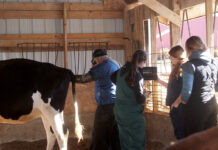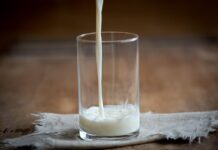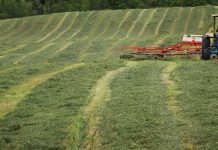What if… one of the kids wants to make dairy his career? What if… we added 200 cows and a new barn? These types of questions are asked regularly on dairy farms across the country.
What if… one of the kids wants to make dairy his career? What if… we added 200 cows and a new barn? Could we build that new heifer barn we need without adding cows? Can we finally build that parlor?
These types of questions are asked regularly on dairy farms across the country. How do you go about answering them? Milk prices are good… let’s go for it. Milk prices are lower than a basset hound’s ears on a hot day… let’s wait. Best guess? Hunch? Evaluate? Plan?
If you asked 20 farm owners how they make one of these decisions, you’re likely to get at least 18 answers. How the decision is made often depends heavily on how the farm has managed their books, finances and planning over the years. Those with good records and inventories have a much easier time projecting and planning the financial aspects of the projects being considered. And, they tend to do it. Those with sketchy records and maybe an inventory or two tend to de-emphasize the financial implications when faced with decision making.
Check tax returns. No matter which category you fall in, each farm does have some basic information that can be used to get an idea of the general profitability of the operation.
Thanks to Uncle Sam, every farm has their farm income tax returns. Looking at five to 10 years’ income tax returns can give us a pretty good picture of the general profitability of a farm.
There are a lot of things that a tax summary cannot tell us. We can guess at a few things, but it will not tell us what the debt position of the farm is. If interest payments seem high compared to income, we can speculate that the farm has a high level of debt, but a balance sheet is the best tool to evaluate the debt position of the farm.
A tax summary will not tell us what the return on assets or equity is beyond positive or negative. Again, a balance sheet and some additional information besides a tax return is needed.
Getting answers. So, what can tax returns help us with? They can help answer an important question. Is the current farm business generating enough cash, year after year, to cover principal payments, family living, reinvestment in the business and income taxes?
If the answer is “yes,” then go right ahead and look for answers to the questions we started with. If the answer is “barely” or “no,” the first question that has to be asked is “why?” If the current business is performing poorly or losing money, additional investment is likely to continue to result in poor performance unless it addresses the causes of poor performance.
For the sample dairy shown, cash available was calculated using total farm income, total farm expenses and farm depreciation from federal tax schedule 1040F. Additional income, usually from cull cows and bull calves might be found on form 4797 or it might all be included on the 1040F. Depends on how your taxes are prepared.
Total expenses are subtracted from total income (Schedule F income plus any section 4797 income) to come up with net farm income. Since depreciation for tax purposes is not an actual cash expense, we add it back to net farm income to come up with cash available to the farm operation.
Where does all that cash go? Well, it has several jobs to do. First, we only counted interest as a farm expense, so part of that cash went to make principal payments. Next, we might have bought some machinery, equipment, replacements or other assets that need to be purchased on a regular basis to keep the farm up-to-date. The cash also pays income taxes.
Last, but certainly not least, the cash covers family living as well as any retirement investments made.
How much is enough? The simple answer is an amount that covers the farm’s needs and obligations. Dairy Excel’s 15 Measures of Dairy Farm Competitiveness suggests a minimum of $75,000 per year for each owner/operator family.
The Dairy Excel calculation also adjusts income for increases or decreases in inventories of crops and livestock for a more accurate picture.
Asking questions for the future or simply checking the pulse of your business, an hour invested in developing your own farm income tax return summary is time well spent.
(The author is the northeast Ohio district dairy specialist with OSU Extension. Send comments or questions in care of Farm and Dairy, P.O. Box 38, Salem, OH 44460.)












